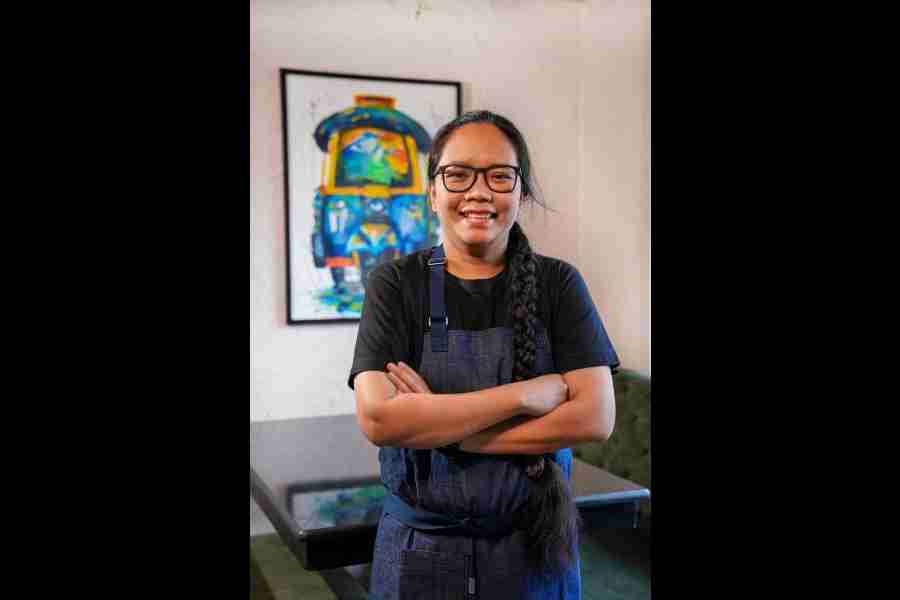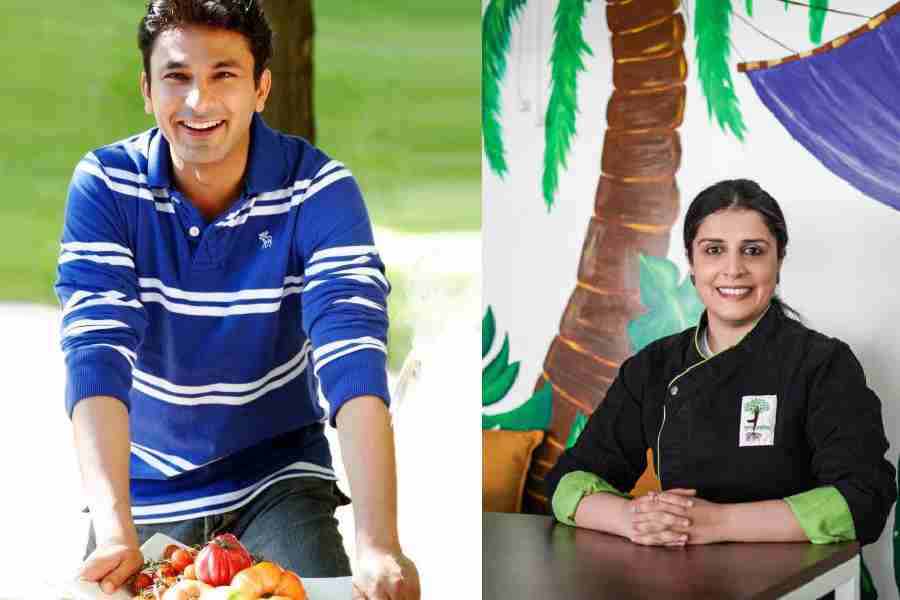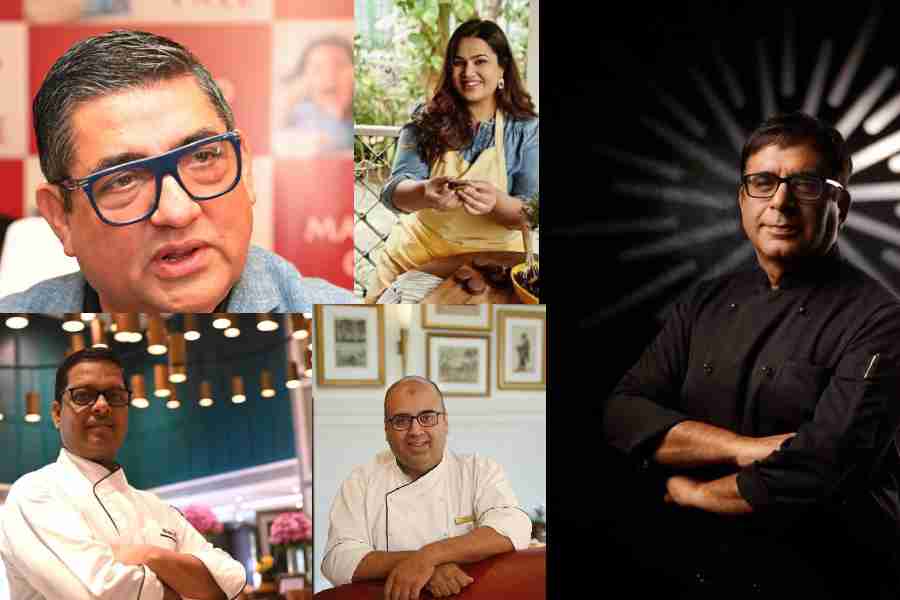From the curry to the biryani, to the tandoori and the thali, there is no denying that Indian food is loved by countries across the globe. But has it really moved beyond the stereotype? This Independence Day, t2 spoke to culinary experts and chefs from across the country to know their views on Indian food making its mark on a global platform and here’s what they all had to say....
"As you know, Lodolron ilkka masala and over a pertod is the capital of Indian food in the sense that they initiated of time that spread. That's where the beginning happened. And over a period of time, it evolved. The excitement for me was when in Japan where I went recently, where the Indian diasron tikka, and o isn't as much, I saw the tandoori dishes, biryanis I on the street, in stand-alone Japanese and restaurants, they are making naan and tandoori chicken, which was fascinating. You don't have too many Indians in Japan, meaning the cuisine has also been accepted by the Japanese. That was really a surprising and proud moment for me when it comes to Indian food," said Anjan Chatterjee, chairmam and MD, of Speciality Restaurants Ltd.
"I feel Indian food is on the world map today when we see multiple Indian restaurants and the chefs internationally earning Michelin stars and accolades. This proves the mettle of Indian cuisine. This cuisine has easily made its place in the modern culinary I with exciting chefs from multilingual backerounds.
Cultures and ethnicity using spices, ingredients and traditional cooking techniques. The use of Ayurveda in Indian cuisine is the biggest example of the same where every ingredient playsa vital part in accompanying each other like one big family coming together fora common cause.... n cookingit is bringing the complex flavours together, creating a blast of flavours in every bite," said Prafull Aina, executive chef, The Oberoi Grand.
"On my first night in Tokyo, I visited The Spice Lab-an Indo-Japanese dining experience which blew my mind. It embraced the flavours of India with Japan's intricacies so well. Eating a yuzu thecha, edamame biryani or local summer fruit cassata was not what I had expected! It really goes to show how adaptable and global Indian cuisine has become," said chef Pooja Dhingra of Le 15 India who's currently on an expedition in Japan.
Indian food has been out on the world map for ages. There is no denying that. But sadly in a very limited way. In my recent trips, I saw Indian food in a different avatar. On my recent trip to Dubai, which has become a food destination of the world, I asked a friend what are the two most popular Indian restaurants. I was expecting Indian Michelin star-type to hear a name of restaurant. But the names I got were Raju Omelette and another one selling litti chokha. And then of course I visited some Michelin star restaurants doing western food. To my pleasant surprise, I saw that almost all restaurants are using predominantly Indian spices and herbs like cardamom, mountain chillies, turmeric etc. Now this is what makes me happy. Indian food in its true form has found a place on the global plate and not in some distorted, modernised form. Spices are not chillies now and gravies are beyond butter masala. In fact this year's list-The Michelin inspectors' most memorable dishes 2022-23-one of the dishes is BBQ Donegal lobster glazed with cacao pod Concentrate and Kari GOsse, carrot and citrus, aromatic lobster sauce. What is Kari Gosse? A mixture of 10 Indian spices. Indian food is out on the world map the way it should be." said chef Sharad Dewan, who runs his gourmet firm Gourmet Design Company.
"I grew up in the UK and I was always surrounded by Indian food. But if we look at where Indian food has travelled, be it East Africa or America, which initially only had Indian food in big cities, or parts of Europe that were initially reluctant to the use of spices, all have a strong Indian food base now. Indians travelled the world and set up their flavours everywhere. The word 'curry is the most travelled word in the culinary world. Wherever Indians set up their base, a new version of curry evolved. Indian food is definitely on the world map, and in the modern day reference, this is just the beginning," quipped chef Shaun Kenworthy.
"When I travel abroad, I see a major change in the kind of food served in Indian restaurants. Traditionally, a couple of decades back it was mainly about chicken tikka masala, chana or so-called Madras curry, but now the authentic regional cuisines are taking over. You get the best of Kerala food, or Tamil food and even Bengali food in restaurants abroad. I think this shows that Indian food is on the global map and arrived internationally. There is also a trend wherein you can see the usage of some Indian food elements in Michelin star non-Indian restaurants. This is also a very encouraging trend for Indian food to be accepted by the world," said Nitin Mathur, executive chef, Taj Bengal.

When I came to India in 2011, the flavours of Indian food daunted me, either too spicy or strong. It wasn't that I was unaware of Indian cuisine owing to the multiple restaurants in my hometown, it's just that I never wanted to try them. Ironically I got married to an Indian and moved to i to the country. I started to experience the cuisine in all its glory and it changed my perspective. My palate got diversified and my respect for this cuisine grew as time passed. My notion that Indian food is just about spices changed, there was so much complexity of flavours and ingredients which varied from region to region. Today when I travel to different countries, I come across Indian restaurants and have witnessed not only Indians but also other nationalities from around the world savouring the food. It gives me pride and joy to see people across different parts of the world enjoying Indian food and also relishing regional Indian cuisine," said chef Seefah of Seefah, Hill Road in Mumbai.

“I think it’s our time to shine right now. One can spot it in small towns and villages in Europe as well as America. There isn’t one isolated instance that makes me feel that Indian food is on a global pedestal. One such instance would be if we recall Indian food now has a lot of coverage from publications such as The New York Times, or Eater, which earlier did not really cover Indian food as much. The credit here goes to chefs who have gone above and beyond in creating different renditions of Indian food and marketed it in a social media-savvy world. Regional Indian food has really been put on the map. For example, South Indian food is so much more than just dosas. Brands such as Indian Accent in London, or Sona in New York are great examples,” said chef Urvika Kanoi of The Daily Cafe and Cafe Duco.

“India’s soft power is our cuisine and its sheer diversity, and the power of our history, plurality, and continuity. And I’m happy to see it finally valued for being authentic and unapologetically true to itself. Today a whole generation of Indian chefs has risen, bringing authentic Indian cuisine to the centre stage — on TV, in books, and at restaurants. Indian cuisine is now earning accolades in the Michelin and Zeitgeist guides and The New York Times,” lauded chef Vikas Khanna, who is behind the critically acclaimed Manhattan restaurant Junoon.
“I recently went to Australia for my honeymoon earlier this year. From the smallest of islands on the coast like Hamilton and Cairns to the big cities like Sydney and Melbourne, there was an abundance of Indian food everywhere. One of my absolute favourite spots is Flyover Fretterie in Sydney, an ode to Indian Street Food with an elevation. Absolutely loved eating the Vada Pav Sliders, Corn Bhel Puri and Mushroom Momos with a base of sesame chutney and chilli oil. Here I was, all the way in Australia eating some of the best Indian street food of my life! Indian food is definitely on the global map,” recalled Raveena Taurani, founder and chef, Yogisattva Cafe in Mumbai.

“Last year I had the privilege of savouring a multi-course meal by chef Gary Mehigan at the Taj Lands End (in Mumbai). I, along with a room full of people, were totally wowed by his Crispy Green Rice Prawns beautifully presented on a paan leaf, and a masterful jackfruit and coconut dish. India and Indians are increasingly making a mark on platforms across the world, be it MasterChef Australia, celebrity-chef-helmed restaurants or political arenas. For the longest time, Indian food has been perceived as a monolith, but in recent times with more and more international chefs interacting with India and Indian chefs taking our food all over the world, perceptions of Indian cuisine are changing rapidly. Whether it’s Gary Mehigan being inspired by Indian cuisine or Manish Mehrotra serving up his magic in Melbourne this very weekend, it is all this that has added to growing associations with Indian food,” said Rushina Munshaw Ghildiyal, managing director, Perfect Bite Consulting, and curating editor of the annual Godrej Foods Trends Report.
“One instance that made me feel that Indian food has truly made its mark on the world map is when I visited a popular Indian restaurant at 75 Brick Lane, London. The restaurant was bustling with people from various nationalities eagerly relishing the exquisite flavours of Indian cuisine. As I glanced around, I noticed individuals from different backgrounds not only enjoying the quintessential Indian dishes such as butter chicken, Sufri gosht, biryani or Bengal pumpkin but also engaging in conversations about the diverse regional cuisines of India. It was heartening to witness how Indian food had become a significant part of the global culinary scene, captivating people’s taste buds and curiosity. The fact that this restaurant was situated in a thriving international city like London, where one can find numerous world-class cuisines, further emphasised the growing influence and recognition of Indian food. The appreciation for Indian flavours, spices, and distinct cooking techniques reflected a wider acceptance and understanding of the rich gastronomic heritage of India,” added chef Ishika Konar, executive chef, Hyatt Regency Kolkata.
“Indian cuisine is a masterpiece of flavours, a symphony of spices that dances on the palate. It’s a journey that takes you through centuries of tradition, a story told through every dish. As an executive chef, my mission is to present Indian food on the global map with authenticity, innovation, and reverence for its rich heritage, so that every bite is not just a taste, but an experience that transcends borders and brings people together. I feel extremely proud to see a humble dosa or chicken tikka masala getting rehashed in various versions abroad. This does show that Indian food is out there,” said Subrata Debnath, executive chef, Taj City Centre Newtown.
